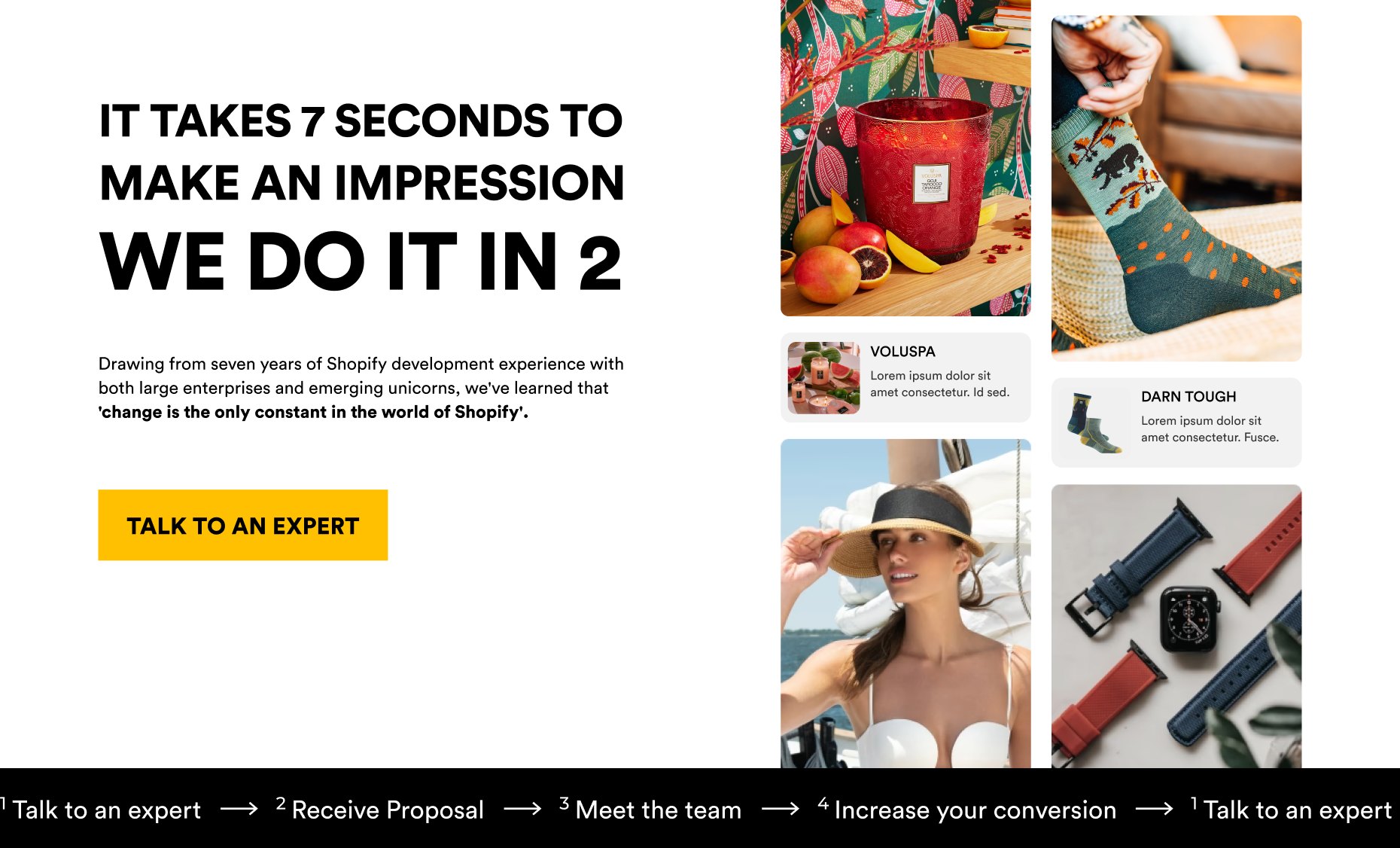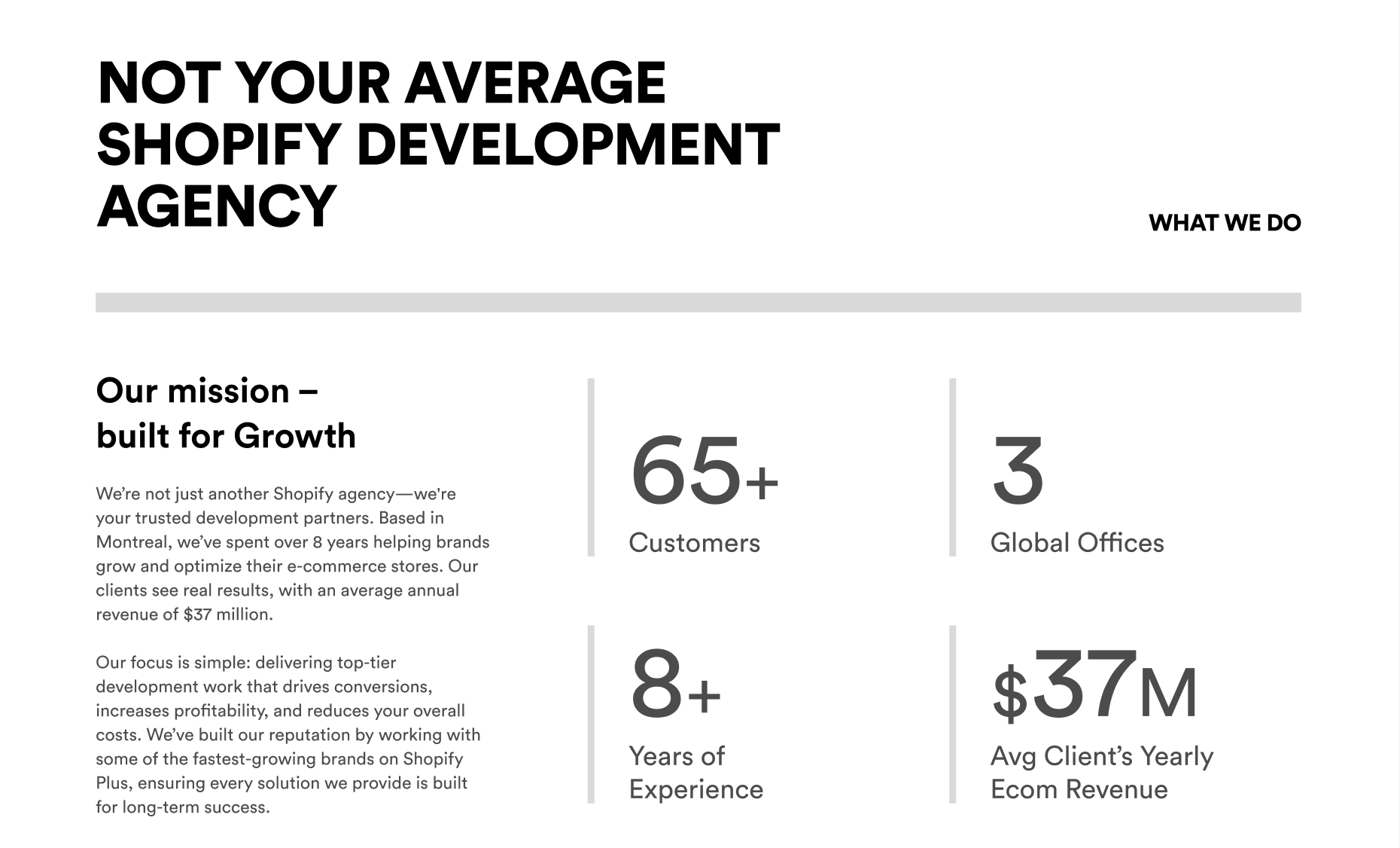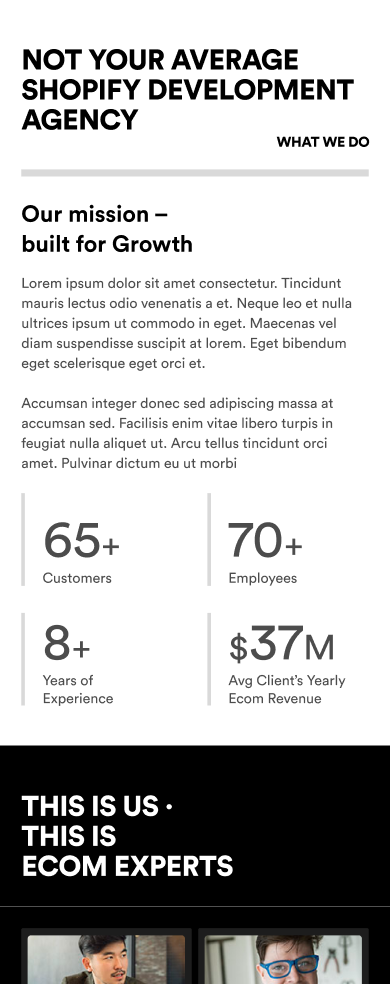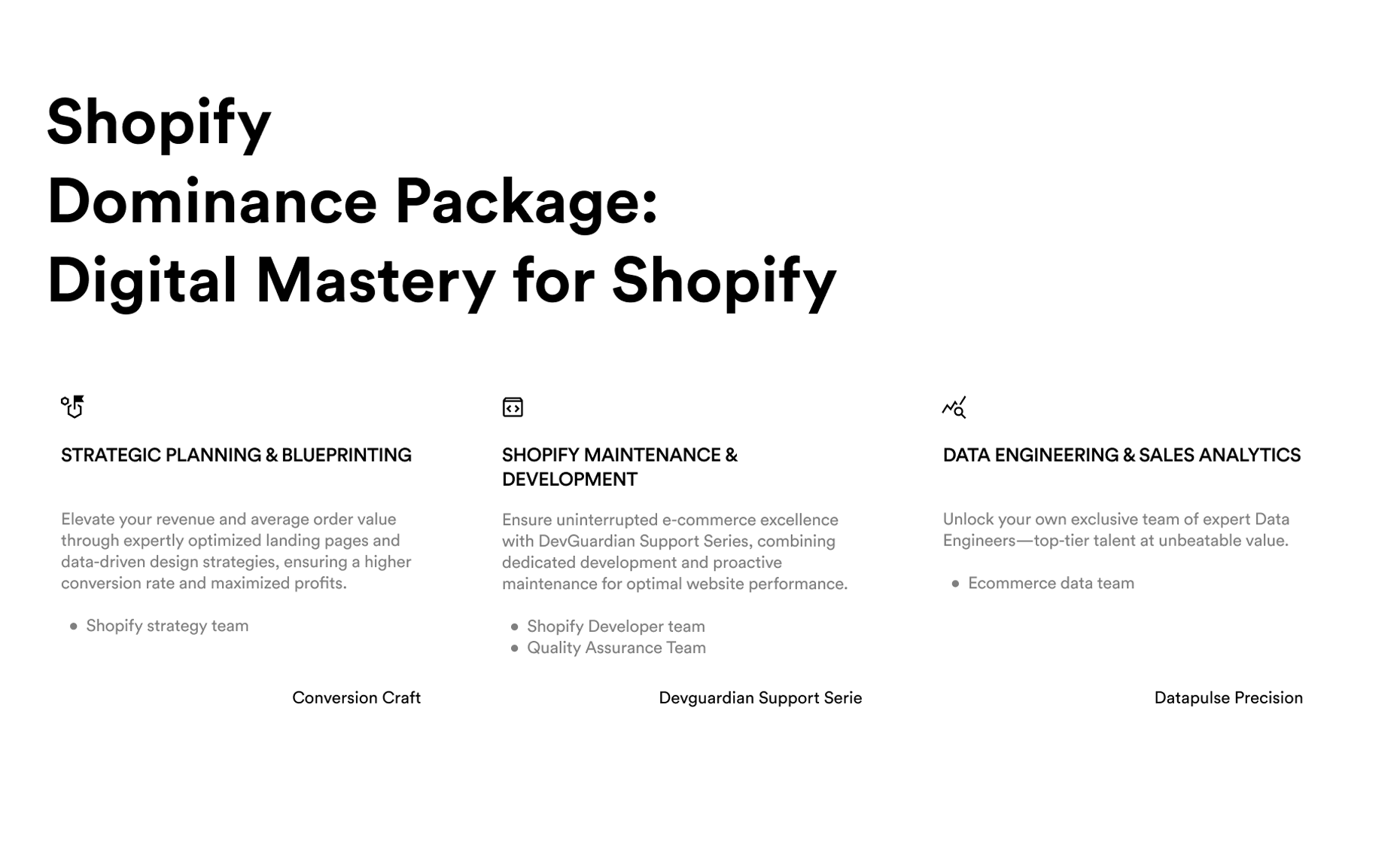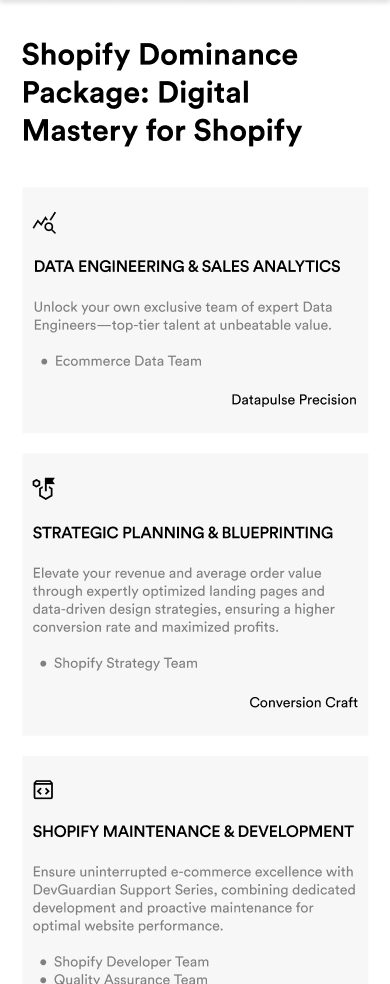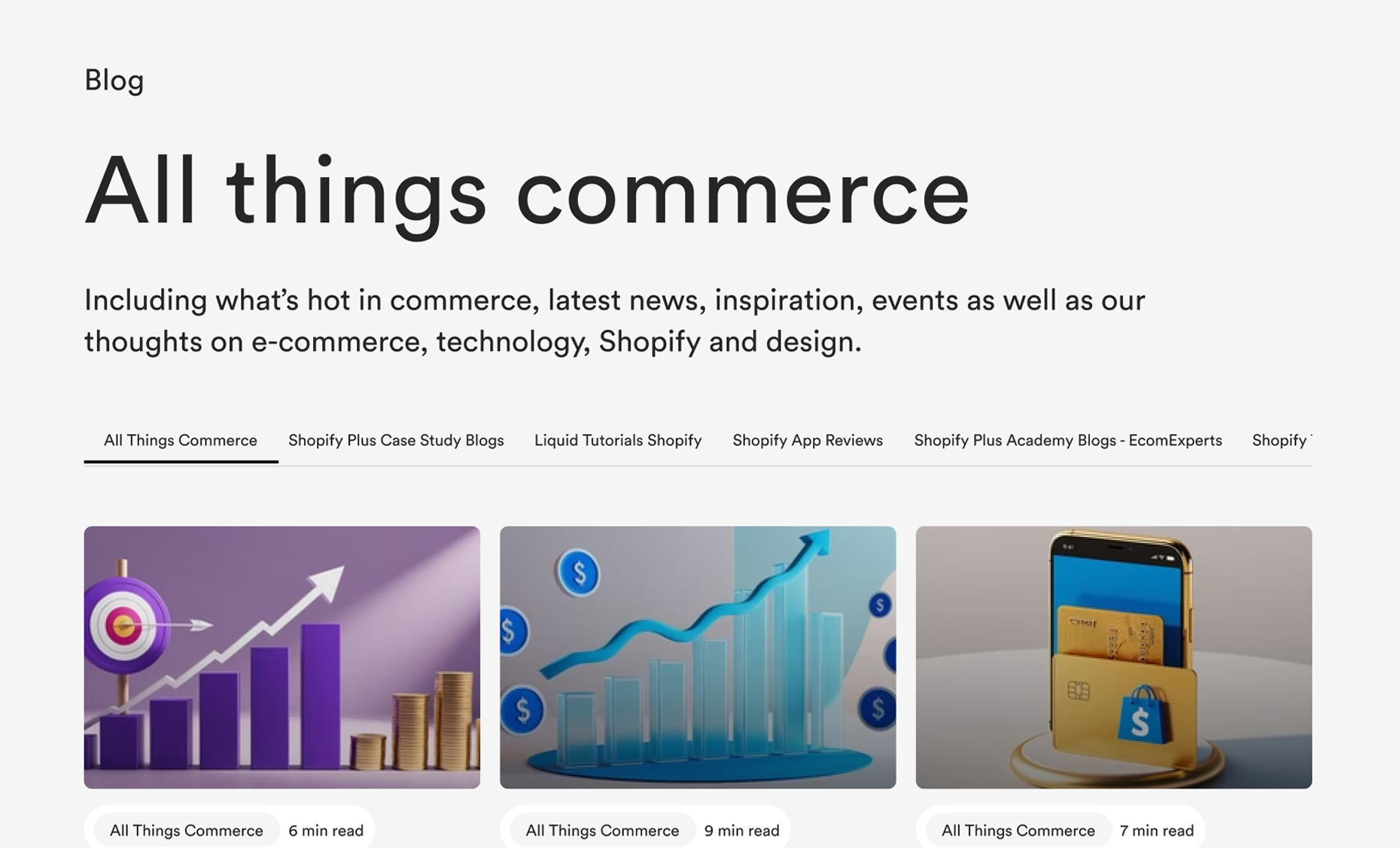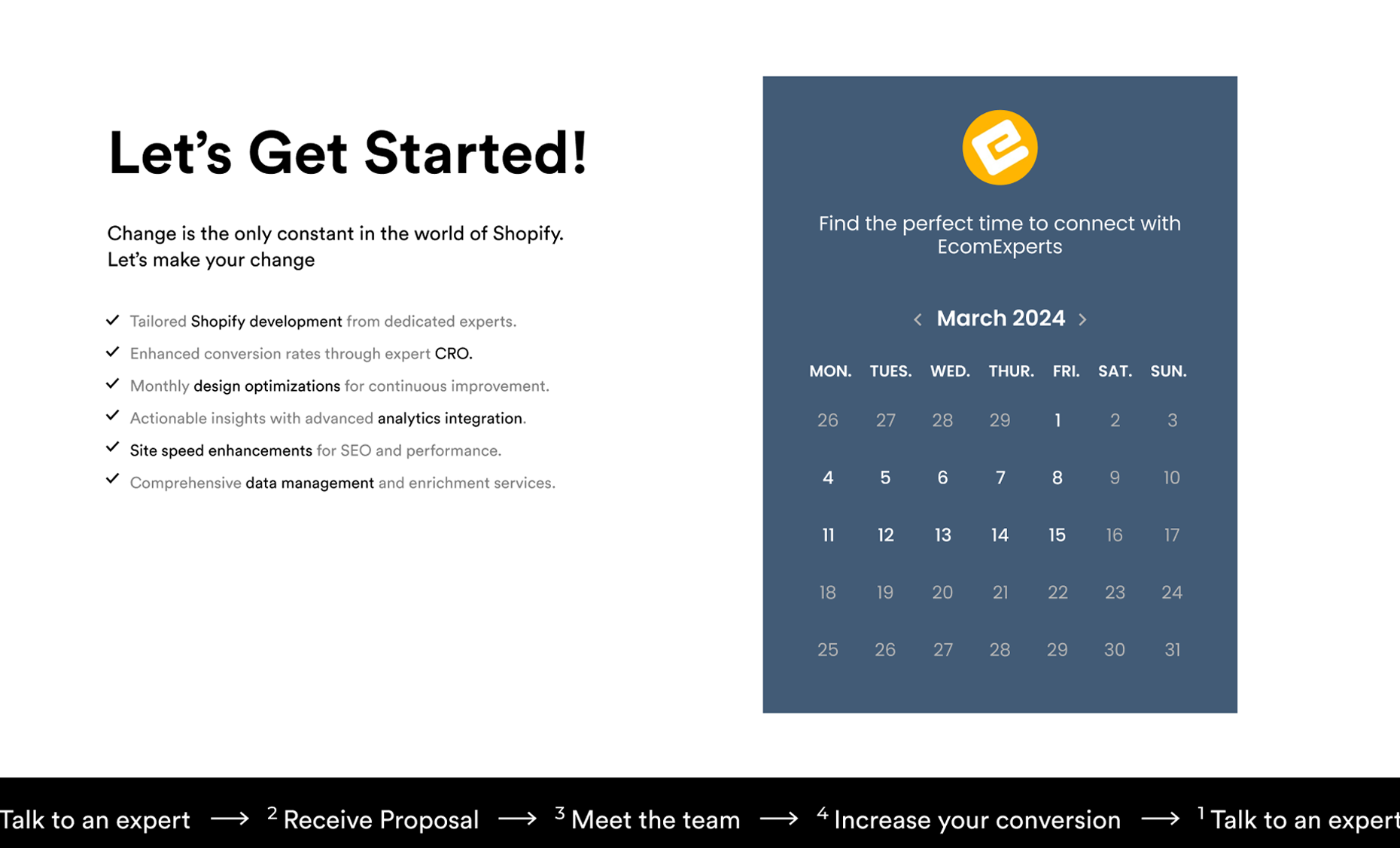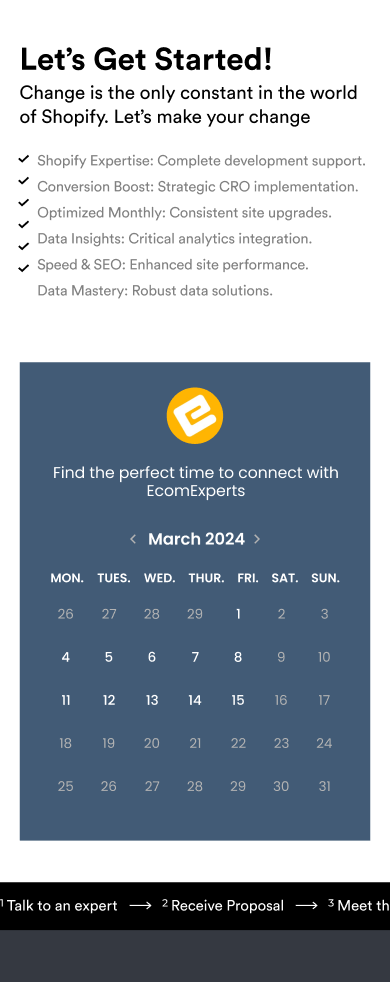What You'll Read In This Blog
- The Critical Role of Conversion Rates in E-Commerce
- What Does Conversion Rate Means in E-Commerce?
- What is a Good Conversion Rate?
- 20 Ways to Increase E-Commerce Conversion Rate
- Conclusion
- FAQs
The Critical Role of Conversion Rates in E-Commerce
Alright, let’s get real. If you’re running an e-commerce business, your conversion rate isn’t just a number—it’s the heartbeat of your online store. We’re talking about the percentage of visitors who actually make a purchase.
You can have all the traffic in the world, but if those visitors aren’t converting, you’re just throwing money out the window. Optimizing your e-commerce conversion rates isn’t just a nice-to-have; it’s a must. It’s the difference between a store that’s thriving and one that’s barely getting by.
Think about it: even a tiny bump in your conversion rate can lead to a massive increase in revenue. Let’s say you’re sitting at a 2% conversion rate. If you can crank that up to 3%, you’re looking at a 50% increase in sales without needing to drive a single extra visitor to your site. That’s the kind of leverage we’re talking about when we focus on e-commerce conversion rate optimization.
This isn’t just about squeezing more dollars out of your existing traffic (although, let’s be honest, that’s awesome). It’s about creating a seamless, frictionless experience for your customers—making it easier for them to buy from you. The easier you make it, the more they buy, and the more they buy, the faster your business grows. It’s that simple.

So, in this blog, we’re going to break down 20 ways to boost your e-commerce conversion rates and take your store to the next level. Ready? Let’s dive in.
What Does Conversion Rate Mean in E-Commerce?
Defining Conversion Rates
Alright, so let’s break this down. What exactly is a conversion rate? In the e-commerce world, your conversion rate is the percentage of visitors who take a specific action you want them to take—most commonly, making a purchase. It’s calculated like this:
Conversion Rate = ( Number of Conversions / Total Visitors ) × 100
Simple, right? But don’t let that simplicity fool you. Your e-commerce conversion rate is one of the most powerful indicators of your store’s performance. It’s a straight-up reflection of how well your site is doing at turning lookers into buyers.
And if you’re on Shopify, you’ve got even more reason to care about your Shopify Conversion Rates. Shopify makes it easy to track this metric and offers a ton of tools to help you boost it. But first, you need to know where you stand.

What is a Good Conversion Rate?
Industry Benchmarks and Variations
So, you’re probably wondering, “What’s a good conversion rate?” The answer? It depends.
Different industries have different benchmarks, but here’s the deal: in e-commerce, the average conversion rate typically hovers around 2% to 3%. But here’s the kicker—2024’s top performers are smashing that average, hitting rates upwards of 5% to 10% depending on the niche.
For instance, if you’re in luxury fashion, you might be looking at a lower conversion rate because of the higher price point. But if you’re selling something like gadgets or health supplements, those numbers could be much higher. The key is to know your industry’s average and aim to beat it.
Here’s a quick snapshot of 2024’s average e-commerce conversion rates across a few sectors:
- Apparel and Fashion: 2.5% - 3.5%
- Health and Wellness: 3.5% - 4.5%
- Tech and Gadgets: 2% - 4%
- Luxury Goods: 1% - 2.5%

Knowing where you stand in comparison to these benchmarks gives you a clear target to aim for. And remember, even if you’re at the top of your game, there’s always room for optimization.
20 Ways to Increase Your E-Commerce Conversion Rate
1. Optimize Your Product Pages
Your product pages are where the magic happens—or doesn’t. If you’re not converting visitors here, all the traffic in the world won’t matter. So, what’s the key? Clear, compelling product descriptions and high-quality images. Your descriptions should speak directly to your customer’s pain points and desires, highlighting the benefits of the product rather than just listing features. It’s about painting a picture that makes them say, “I need this.”
Pro Tip: Use bullet points for quick scanning, and don’t shy away from adding a little personality to your descriptions. High-quality images are non-negotiable. Customers want to see exactly what they’re buying, so offer multiple angles and zoom options. If you can, include lifestyle images that show the product in use. This not only boosts credibility but also helps the customer visualize the product in their own life.

2. Simplify Navigation
If your customers can’t find what they’re looking for within seconds, they’re bouncing. And guess what? They’re probably not coming back. Simplifying your site’s navigation is one of the easiest ways to improve the user experience and keep visitors on your site longer—ultimately leading to more conversions.
Think of your navigation as the GPS of your website. It should guide visitors effortlessly to where they need to go, without detours or confusion. This means having a clear and concise menu, logical categorization of products, and a powerful search function. The fewer clicks it takes for a visitor to find a product, the better.
Pro Tip: Avoid overwhelming users with too many options. Keep your navigation simple, with drop-down menus that offer clear paths to product categories, sales, or new arrivals. Also, consider adding breadcrumbs to help users easily backtrack if needed.
3. Enhance Mobile Responsiveness
With mobile traffic accounting for a significant portion of e-commerce visits, ensuring your site is fully optimized for mobile devices isn’t just important—it’s crucial. A site that looks and functions perfectly on a desktop but falls apart on a smartphone is a conversion killer.
Mobile responsiveness means your site should be easy to navigate, load quickly, and offer a seamless shopping experience, no matter the screen size. This includes everything from ensuring your buttons are tappable (no one wants to pinch and zoom to click “Add to Cart”) to making sure your images load quickly and look sharp on mobile devices.
Pro Tip: Test your site on multiple devices and screen sizes. Use tools like Google’s Mobile-Friendly Test to identify issues and fix them before they cost you sales. Remember, mobile shoppers are often on the go, so speed and simplicity are key.

4. Improve Site Speed
Here’s the deal: if your site takes more than a few seconds to load, you’re losing potential customers. In today’s fast-paced digital world, speed matters—especially for e-commerce. A delay of even one second can result in a significant drop in conversions. The faster your site loads, the better your chances of keeping visitors engaged and moving them through the buying process.
According to Google, a one-second improvement in page load time can increase conversions by up to 27%.
That’s a huge opportunity you don’t want to miss. Tools like Google PageSpeed Insights can help you identify and fix issues that are slowing down your site.
Pro Tip: Compress your images, leverage browser caching, and minimize redirects to boost your site speed. If you’re on Shopify, take advantage of their built-in optimization tools to keep your site running fast and smooth.

5. Use High-Quality Visuals and Videos
We live in a visual world, and your e-commerce site needs to reflect that. High-quality visuals and videos are not just nice-to-haves—they’re must-haves. They help tell your brand’s story, showcase your products in the best light, and engage your customers on a deeper level.
Videos, in particular, are powerful tools for increasing conversions. Whether it’s a product demo, a customer testimonial, or a behind-the-scenes look at your brand, video content can help bridge the gap between browsing and buying. People are more likely to purchase after watching a product video because it gives them a better sense of the product’s value and functionality.
Pro Tip: Include a mix of product videos, 360-degree views, and high-resolution images that can be zoomed in on. Make sure your visuals load quickly and look great on all devices. This not only enhances the user experience but also keeps visitors on your page longer—boosting your chances of conversion.

6. Leverage Social Proof
Let’s face it—people trust other people more than they trust brands. That’s why social proof is a powerhouse for boosting your e-commerce conversion rates. When potential customers see others raving about your products, it builds the credibility and trust you need to turn visitors into buyers.
Customer Reviews and Testimonials
Here’s the deal: Customer reviews are gold. They provide the social proof that convinces skeptical shoppers to click “Add to Cart.” Make sure these reviews are front and center on your product pages. If you’ve got glowing testimonials, don’t hide them. Display them where they can do the most good, like right next to the product they’re praising.
And it’s not just about written reviews. Star ratings, photos from customers, and even video testimonials can give your products the boost they need to stand out.
User-Generated Content (UGC)
Take things up a notch with UGC. This is where your customers create content that features your products, like Instagram posts or YouTube reviews. UGC is powerful because it’s authentic. When potential buyers see real people enjoying your products, it makes your brand more relatable and trustworthy.
Pro Tip: Encourage customers to share their experiences on social media and feature this content on your site. It’s like word-of-mouth marketing on steroids, and it can seriously lift your e-commerce conversion rates.
7. Implement A/B Testing
If you’re not A/B testing, you’re leaving money on the table. A/B testing is a surefire way to optimize your e-commerce conversion rate by comparing two versions of a landing page to see which one performs better. It’s like having a crystal ball that shows you what your customers really want.
How A/B Testing Works
Here’s how it goes down: You create two versions of a page—let’s call them Version A and Version B. Maybe Version A has a red “Buy Now” button, while Version B has a green one. You split your traffic evenly between the two versions and see which one converts more visitors into customers. Simple, but effective.
The best part? The data doesn’t lie. A/B testing gives you hard evidence about what works and what doesn’t, so you can make data-driven decisions that lead to higher Shopify Conversion Rates.
Pro Tip: Use tools like Google Optimize or Optimizely to run your A/B tests efficiently. And don’t stop at one test. Keep experimenting to continuously improve your e-commerce conversion rate optimization.
8. Create Compelling CTAs
Your Call to Action (CTA) is the moment of truth. It’s the button that turns a casual browser into a paying customer. But here’s the thing—your CTA needs to be clear, direct, and irresistible. A weak CTA is a missed opportunity.
Crafting the Perfect CTA
Ditch the generic “Click Here” or “Submit.” Your CTA needs to be action-packed and convey a sense of urgency. Think “Get Yours Now” or “Unlock Your Discount.” The language should be strong, and the design should make the button pop off the page. A CTA should be impossible to miss and even harder to resist.
Placement matters too. Your CTA should be above the fold and repeated in strategic locations as users scroll down the page. And don’t forget to test different wording and placements through A/B testing to see what drives the best results.
Pro Tip: Use contrasting colors for your CTA buttons so they stand out against the rest of the page. This visual cue can significantly boost your Shopify Conversion Rates.
9. Offer Free Shipping
Free shipping—it’s one of the simplest yet most effective ways to boost your e-commerce conversion rates. Why? Because unexpected shipping costs are one of the top reasons for cart abandonment. When customers know they won’t have to pay extra at checkout, they’re much more likely to follow through with their purchase.
Why Free Shipping Works
Offering free shipping removes a major friction point in the buying process. It’s a perk that can make the difference between a customer completing their order or bailing at the last minute. You can offer it across the board or set a minimum purchase threshold to encourage larger orders. Either way, free shipping is a win for both you and your customers.
Pro Tip: Promote your free shipping offer prominently on your site. Mention it on your homepage, product pages, and especially at checkout. The more visible it is, the more it will help reduce cart abandonment and increase average order value.
10. Simplify the Checkout Process
Your checkout process is the final hurdle, and if it’s too complicated, you’re going to lose sales—plain and simple. Streamlining checkout is critical for improving your e-commerce conversion rates. The goal is to make it as easy as possible for customers to complete their purchase.
How to Simplify Checkout
Cut down on the number of steps required to complete a purchase. Offer guest checkout options so customers don’t have to create an account if they don’t want to. Reduce the amount of information you ask for—every extra field is an opportunity for customers to abandon their cart.
And here’s a big one: Implement one-click checkout options like Shopify’s Shop Pay. This not only speeds up the process but also boosts Shopify Conversion Rates by making it super easy for customers to buy with minimal effort.
Pro Tip: Test your checkout process regularly to identify and eliminate any friction points. The smoother the process, the higher your conversion rates will be.

11. Use Pop-Ups Strategically
Pop-ups—they can be a double-edged sword. When used correctly, they’re a fantastic tool for e-commerce conversion rate optimization. But when overused or poorly timed, they can annoy your visitors and drive them away. The key is to introduce pop-ups strategically, offering something of value to your customers without interrupting their shopping experience.
How to Use Pop-Ups Effectively
Pop-ups should be timely and relevant. For example, consider using exit-intent pop-ups to capture users who are about to leave your site. Offer them a discount or a special promotion to entice them to stay. Another effective strategy is to use a pop-up to encourage email sign-ups in exchange for a small discount on their first purchase.
The golden rule? Don’t bombard your visitors with too many pop-ups. A single, well-timed pop-up can boost conversions, but too many will have the opposite effect.
Pro Tip: A/B test different pop-up designs and timing to see what resonates best with your audience. Tools like OptinMonster or Sumo can help you create and manage effective pop-ups that contribute to higher e-commerce conversion rates.

12. Utilize Upselling and Cross-Selling
Want to increase your average order value without driving more traffic? Upselling and cross-selling are your go-to strategies. By recommending relevant products, you can maximize each transaction and give your customers more of what they want.
Upselling vs. Cross-Selling
Upselling is when you encourage customers to purchase a more expensive version of a product they’re already interested in. Cross-selling, on the other hand, is about suggesting additional products that complement what’s already in their cart. For example, if a customer is buying a laptop, you might suggest an upgraded model (upselling) or a carrying case (cross-selling).
These strategies not only increase your e-commerce conversion rates but also enhance the customer experience by providing them with better and more complete solutions.
Pro Tip: Use product recommendation engines that analyze customer behavior to suggest the most relevant upsells and cross-sells. Shopify’s built-in tools make this process seamless, helping you boost your Shopify Conversion Rates.

13. Optimize for Search Engines
You’ve heard it before: SEO is crucial for driving organic traffic. But here’s the thing—SEO isn’t just about getting people to your site. It’s also about optimizing your product pages and content to ensure that visitors who land on your site actually convert. That’s where e-commerce conversion rate optimization intersects with search engine optimization.
SEO Best Practices for E-Commerce
Start by ensuring that your product pages are fully optimized with relevant keywords in the title, meta descriptions, and alt tags. But don’t stop there. Your content needs to be engaging and persuasive, guiding visitors down the funnel from interest to purchase.
Also, don’t forget about site speed—Google loves fast-loading sites, and so do your customers. A faster site not only ranks better but also converts better.
Pro Tip: Use tools like Google Search Console and Ahrefs to track your rankings and identify opportunities to optimize your content further. Remember, higher rankings + better conversion rates = a win-win for your e-commerce business.
14. Incorporate Urgency and Scarcity
People hate missing out—it’s human nature. That’s why tactics like urgency and scarcity are so effective at boosting e-commerce conversion rates. By creating a sense of urgency, you encourage customers to act quickly, while scarcity makes them feel that the product they’re eyeing is in high demand and could run out at any moment.
Urgency and Scarcity Tactics
Use countdown timers to show limited-time offers or discounts. Display messages like “Only 3 left in stock” or “Sale ends in 2 hours” to create a sense of urgency. These tactics tap into the fear of missing out (FOMO) and push customers to make faster decisions.
Pro Tip: Use tools like Countdown Cart for Shopify to easily add these elements to your product pages and watch your Shopify Conversion Rates climb.
15. Personalize the Shopping Experience
Personalization isn’t just a buzzword—it’s a critical component of e-commerce conversion rate optimization. When you tailor the shopping experience to each individual visitor, you make them feel valued and understood, which can significantly boost your conversion rates.
How to Personalize the Experience
Use data to track visitor behavior and preferences. Recommend products based on their browsing history or past purchases. Personalize email campaigns with tailored product suggestions and special offers. The more relevant your recommendations, the more likely customers are to convert.
Pro Tip: Implement personalization tools like Nosto or Dynamic Yield to automate and optimize the personalization process on your Shopify store.
16. Implement Retargeting Campaigns
Here’s the truth: most visitors won’t buy on their first visit to your site. That’s why retargeting is a must-have in your e-commerce toolkit. Retargeting campaigns allow you to re-engage those visitors who left without converting by showing them targeted ads as they browse other sites or social media. It’s like a gentle reminder that brings them back to your store to finish what they started.
How Retargeting Boosts Conversions
Retargeting works by tracking visitors and then displaying ads for the products they viewed but didn’t purchase. This keeps your brand top of mind and encourages them to return to your site to complete their purchase. The best part? Retargeting can significantly increase your e-commerce conversion rates by recapturing potential customers who might have otherwise been lost.
Pro Tip: Use dynamic retargeting to show customers the exact products they were interested in, combined with a special offer to sweeten the deal. Platforms like Facebook Ads and Google Ads make it easy to set up and manage retargeting campaigns that drive results.

17. Offer Multiple Payment Options
The more payment options you offer, the easier it is for customers to complete their purchase. It’s all about convenience. By providing a variety of payment methods, you cater to different customer preferences and remove potential barriers to conversion.
Why Multiple Payment Options Matter
Not everyone wants to pay the same way. Some prefer credit cards, others like PayPal, Apple Pay, or even Buy Now, Pay Later (BNPL) options. Offering multiple payment methods ensures that every customer can find their preferred way to pay, making it more likely that they’ll follow through with their purchase.
Pro Tip: Make sure all payment options are clearly visible and easy to select during checkout. This not only enhances the user experience but also contributes to your e-commerce conversion rate optimization.
18. Provide Exceptional Customer Support
Customer support isn’t just a nice-to-have—it’s a conversion driver. When customers know they can get help quickly, they’re more likely to complete their purchase. That’s why offering exceptional customer support is essential for improving your Shopify Conversion Rates.
How to Deliver Great Customer Support
Offer multiple channels for customer support, including live chat, FAQs, and easy-to-find contact options. Live chat is particularly effective because it allows customers to get instant answers to their questions, reducing the chances of cart abandonment. FAQs are also crucial—they can address common concerns and help customers make informed decisions.
Pro Tip: Make your support options highly visible on product and checkout pages. The easier it is for customers to get help, the more confident they’ll feel about making a purchase.
19. Leverage Email Marketing
Email marketing is one of the most powerful tools for recovering lost sales and driving conversions. Abandoned cart emails, in particular, are highly effective. These emails remind customers who added items to their cart but didn’t complete the purchase, nudging them to come back and finish the transaction.
Maximizing Email Marketing
Your abandoned cart emails should be timely, personalized, and persuasive. Include images of the items left behind, offer a discount or free shipping, and create a sense of urgency by letting customers know the items are in limited supply. Follow-up emails are also key—sometimes it takes more than one nudge to bring a customer back.
Pro Tip: Use email platforms like Klaviyo or Mailchimp to automate your email sequences and track their effectiveness. These platforms allow you to fine-tune your emails for maximum impact, boosting your e-commerce conversion rates.

20. Engage with Content Marketing
Content marketing isn’t just about attracting visitors—it’s about keeping them engaged and moving them closer to a purchase. By providing valuable content, you build trust with your audience and encourage them to return to your site, which can significantly boost your e-commerce conversion rate optimization.
How Content Marketing Drives Conversions
Create content that speaks to your customers’ needs and interests. This could be blog posts, how-to guides, videos, or customer success stories. The goal is to educate, inspire, and entertain your audience, positioning your brand as a trusted resource.
Pro Tip: Incorporate strong calls to action within your content, directing readers to related products or services. This not only engages your audience but also drives them toward making a purchase.
Conclusion
Let’s wrap this up. We’ve covered 20 powerful strategies to boost your e-commerce conversion rates, each designed to address different aspects of your online store’s performance. From optimizing your product pages and simplifying navigation to leveraging social proof and implementing retargeting campaigns, these tactics are your toolkit for turning more visitors into customers.
Here’s the bottom line: Conversion rate optimization isn’t a one-and-done deal. It’s an ongoing process. The e-commerce landscape is always evolving, and so are the behaviors and expectations of your customers. That means continuous testing, tweaking, and improving are essential if you want to stay ahead of the game and keep your Shopify Conversion Rates climbing.
Remember, even small changes can lead to big results. Whether it’s refining your CTAs, enhancing your site’s mobile responsiveness, or offering multiple payment options, every adjustment you make should be geared toward creating a smoother, more satisfying shopping experience for your customers. And when you focus on delivering value at every step, your conversion rates will reflect that effort.
So, take these strategies, put them into action, and keep optimizing. The success of your e-commerce store depends on it.
FAQs
Q1: What is a good e-commerce conversion rate?
Answer: A good conversion rate typically ranges from 3-4%, but this can vary depending on the industry. For example, luxury goods may see lower conversion rates due to higher price points, while health and wellness products might achieve higher rates. The key is to benchmark your store against industry averages and continuously optimize to exceed those benchmarks.
Q2: How can I calculate my e-commerce conversion rate?
Answer: Calculating your e-commerce conversion rate is straightforward. Take the number of conversions (e.g., purchases) and divide it by the total number of visitors to your site. Multiply that result by 100 to get a percentage. For example, if you had 100 conversions out of 5,000 visitors, your conversion rate would be 2%.
Q3: Why is site speed important for conversion rates?
Answer: Site speed is crucial because it directly affects user experience. Faster load times reduce bounce rates, increase user satisfaction, and keep visitors on your site longer—all of which contribute to higher conversion rates. Studies show that even a one-second delay in page load time can result in a significant drop in conversions.
Q4: How can Ecom Experts help improve my Shopify Conversion Rates?
Answer: Ecom Experts specializes in optimizing Shopify stores to increase conversion rates. We use tailored strategies and technical enhancements to streamline your site’s performance, improve user experience, and ensure that every element of your store is geared towards converting visitors into customers. Whether it’s improving site speed, refining your checkout process, or implementing advanced A/B testing, Ecom Experts has the expertise to help you maximize your Shopify Conversion Rates.
Q5: What role does A/B testing play in conversion rate optimization?
Answer: A/B testing is essential for conversion rate optimization because it allows you to test different versions of your landing pages or other site elements to see which performs better. By comparing different headlines, CTAs, layouts, and even colors, A/B testing helps you identify what resonates most with your audience, making it a critical tool for ongoing optimization efforts.


